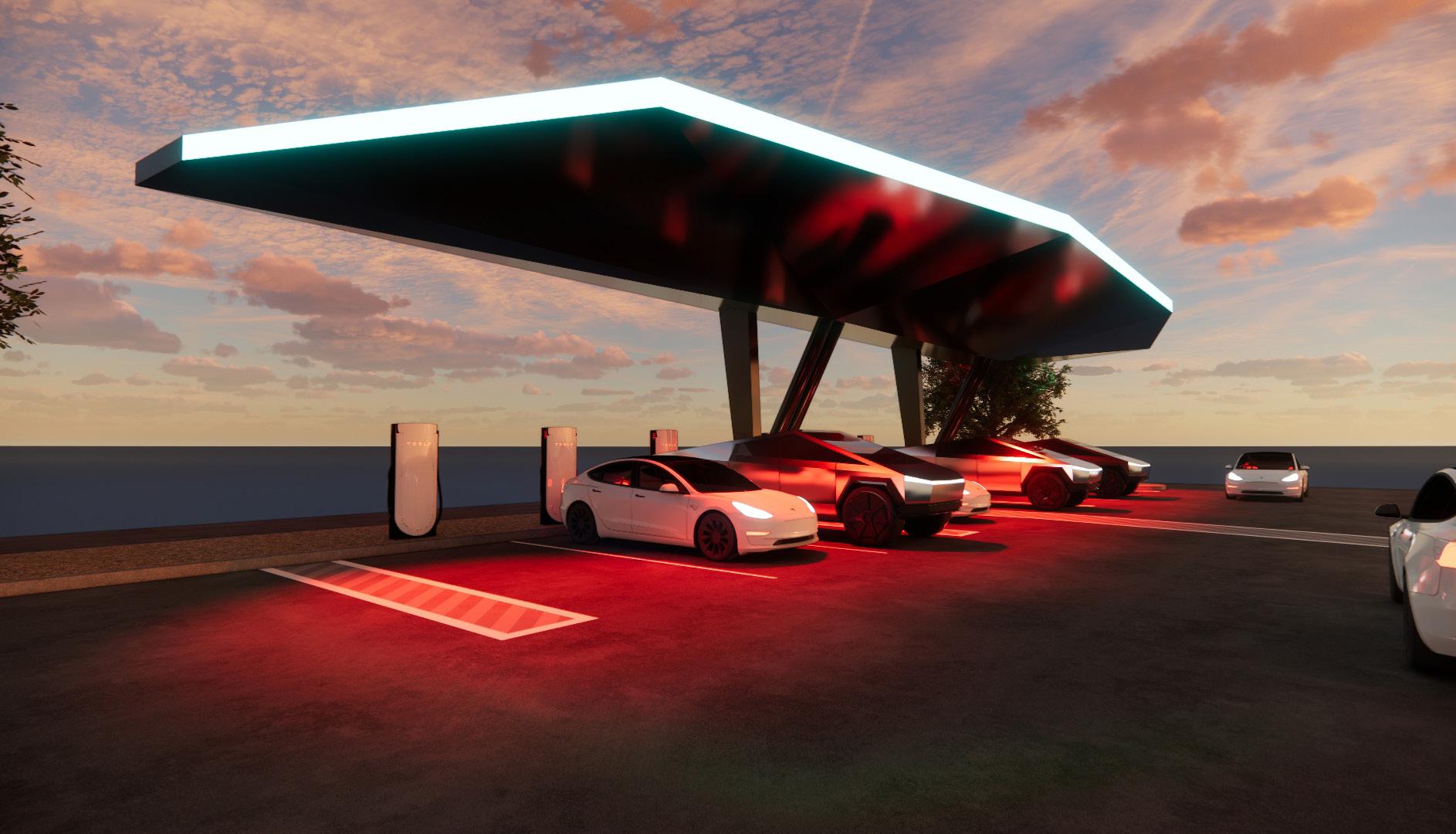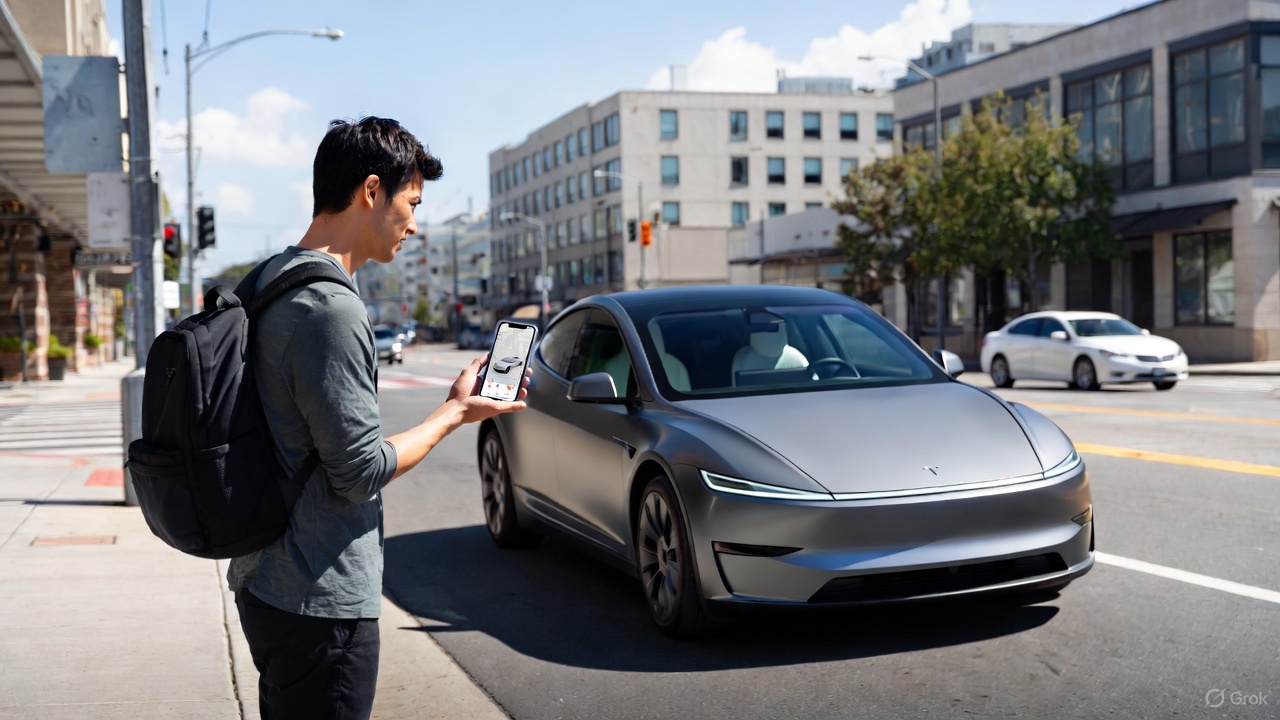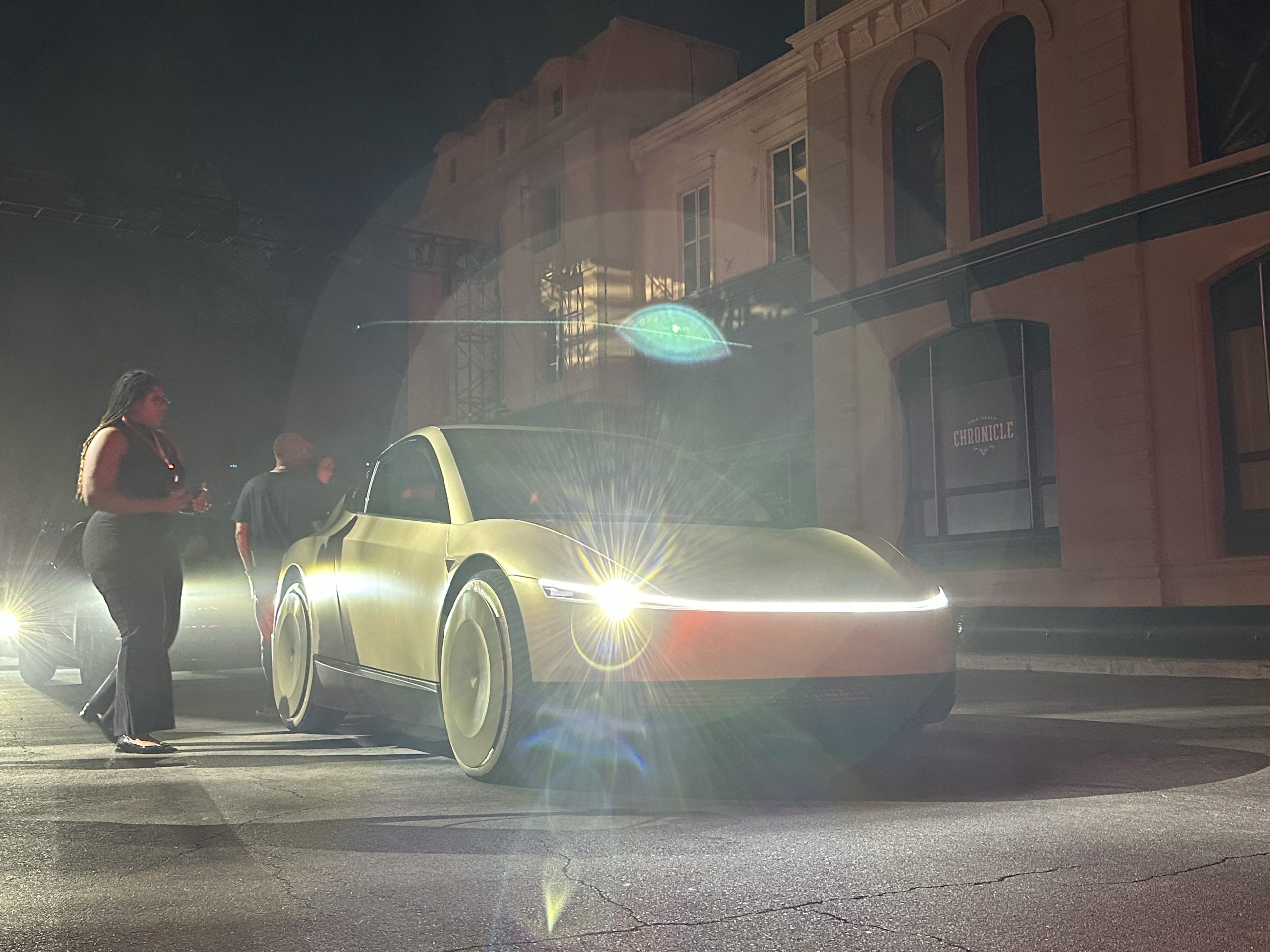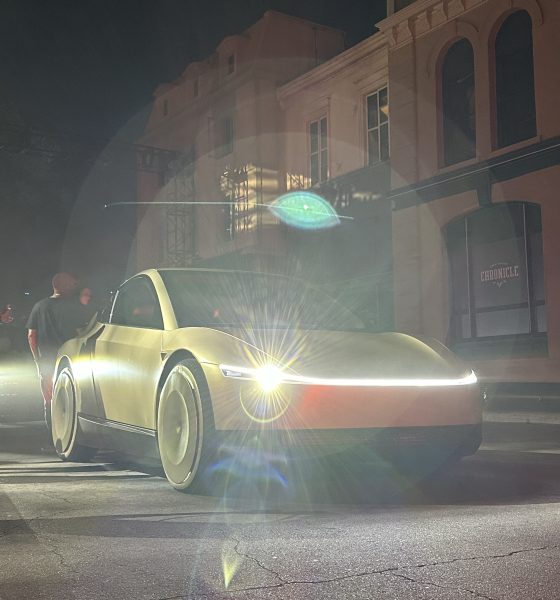If there were any complaints about Tesla’s “We, Robot” event, it was the fact that the occasion was very light on details surrounding the Cybercab. Fortunately, a good number of Tesla staff and even some executives were reportedly willing to provide some details about the upcoming vehicle.
In a post on social media platform X, longtime Tesla shareholder and owner-enthusiast Matthew Donegan-Ryan noted he was able to speak with Tesla Design Chief Franz von Holzhausen and Vice President of Vehicle Engineering Lars Moravy following the “We, Robot” event. The executives reportedly provided some insights about the upcoming vehicle, some of which were not mentioned in Elon Musk’s presentation at the occasion.
For one, there are reportedly no plans to make a Cybercab with a steering wheel and pedals. This is not surprising as such a vehicle would likely adversely affect the sales of the Model 3, Tesla’s second best-selling vehicle. It does, however, highlight the idea that Tesla is betting a notable part of its future on the Robotaxi and its potential to change the way people commute.
?Big Tesla Cybercab photo dump thread ?
PLUS more details from @larsmoravy and @woodhaus2:
– There are no plans to make a Cybercab with a steering wheel and pedals (demand for the Robotsxi version will essentially be unlimited). pic.twitter.com/RGdf6NgovJ— Matthew Donegan-Ryan (@MatthewDR) October 11, 2024
The Cybercab’s production will reportedly start in Giga Texas, before moving to other factories. The vehicle will reportedly share parts with the Model 3 and the Model Y, making it easier to produce and ramp. Even the Robovan will reportedly share a surprising number of parts from the company’s other vehicles. As for cameras, the Cybercab will reportedly feature the same layout as the Model 3 and Model Y, with the addition of a front bumper camera similar to the one fitted in the Cybertruck.
– All Teslas on the road running hardware 3 or 4 will be able to function as robotaxis without needing any hardware retrofitting. pic.twitter.com/QRHCfWUvy4— Matthew Donegan-Ryan (@MatthewDR) October 11, 2024
Quite interestingly, Donegan-Ryan mentioned in his posts that all Teslas on the road running Hardware 3 or Hardware 4 would be able to function as Robotaxis without needing any hardware retrofits. These exact claims were echoed in a video posted by Tesla owner Kim Java, who was able to conduct a brief interview with von Holzhausen and Moravy following Musk’s keynote. In her interview, Java asked if her 2018 Model 3 with Hardware 3 could run as a Robotaxi. The executives confirmed that yes, such a vehicle could operate as an autonomous car.
– Cybercabs will not have Tesla logos (like Cybertruck). Everyone will know it’s a Tesla by the design. pic.twitter.com/J9HgWXpFcs— Matthew Donegan-Ryan (@MatthewDR) October 11, 2024
Interestingly enough, the Cybercab will reportedly follow in the Cybertruck’s footsteps when it comes to branding, with the vehicle not having a single Tesla badge. This is quite a bold decision, though considering that Tesla plans to mass produce the Cybercab in very large quantities, a badge for the vehicle may not be needed at all. Just like the Cybertruck, people will know it’s a Tesla just by looking at it.
– I have never seen Franz and Lars as excited and positive as they were tonight. They both displayed a great sense of accomplishment. pic.twitter.com/OdVw6Qs2TG— Matthew Donegan-Ryan (@MatthewDR) October 11, 2024
The Cybercab will reportedly feature just three interior buttons, comprised of two window switches and a dome light switch. Every other feature that commuters wish to access or activate would be done through the touchscreen. Finally, the Cybercab will reportedly not be made with steel like the Cybertruck to keep costs low, and the vehicle’s inductive charging system might actually prove cost-effective because it would require fewer materials and cabling.
Watch Kim Java’s video of Tesla’s “We, Robot” event below.
Don’t hesitate to contact us with news tips. Just send a message to simon@teslarati.com to give us a heads up.

News
Tesla gamifies Supercharging with new ‘Charging Passport’
It will also include things like badges for special charging spots, among other metrics that will show all of the different places people have traveled to plug in for range.

Tesla is gamifying its Supercharging experience by offering a new “Charging Passport,” hoping to add a new layer to the ownership experience.
While it is not part of the Holiday Update, it is rolling out around the same time and offers a handful of cool new features.
Tesla’s Charging Passport will be available within the smartphone app and will give a yearly summary of your charging experience, helping encapsulate your travel for that year.
It will also include things like badges for special charging spots, among other metrics that will show all of the different places people have traveled to plug in for range.
Tesla has just introduced “Charging Passport,” a new yearly summary of your charging.
• Charging badges: Iconic Charging badge (for visiting places like the Tesla Diner, Oasis Supercharger, etc), Explorer badge, green saver badge, etc.
• Total unique Superchargers visited
•… pic.twitter.com/c1DHTWXpj7— Sawyer Merritt (@SawyerMerritt) December 8, 2025
Tesla will include the following metrics within the new Charging Passport option within the Tesla app:
- Charging badges: Iconic charging badges for visiting places like the Tesla Diner, Oasis Supercharger, etc., Explorer Badge, and more
- Total Unique Superchargers Visited
- Total Charging Sessions
- Total Miles Added during Charging Sessions
- Top Charging Day
- Longest Trip
- Favorite Charging Locations
This will give people a unique way to see their travels throughout the year, and although it is not necessarily something that is needed or adds any genuine value, it is something that many owners will like to look back on. After all, things like Spotify Wrapped and Apple Music Replay have been a great way for people to see what music they listened to throughout the year.
This is essentially Tesla’s version of that.
With a handful of unique Superchargers already active, Tesla is also building some new ones, like a UFO-inspired location in New Mexico, near Roswell.
Tesla is building a new UFO-inspired Supercharger in the heart of Alien country
News
Tesla launches its coolest gift idea ever just a few weeks after it was announced
“Gift one month of Full Self-Driving (Supervised), which allows the vehicle to drive itself almost anywhere with minimal intervention.”

Tesla has launched its coolest gift idea ever, just a few weeks after it was announced.
Tesla is now giving owners the opportunity to gift Full Self-Driving for one month to friends or family through a new gifting program that was suggested to the company last month.
The program will enable people to send a fellow Tesla owner one month of the company’s semi-autonomous driving software, helping them to experience the Full Self-Driving suite and potentially help Tesla gain them as a subscriber of the program, or even an outright purchase.
Tesla is going to allow owners to purchase an FSD Subscription for another owner for different month options
You’ll be able to gift FSD to someone! https://t.co/V29dhf5URj
— TESLARATI (@Teslarati) November 3, 2025
Tesla has officially launched the program on its Shop. Sending one month of Full Self-Driving costs $112:
“Gift one month of Full Self-Driving (Supervised), which allows the vehicle to drive itself almost anywhere with minimal intervention. All sales are final. Can only be purchased and redeemed in the U.S. This gift card is valued at $112.00 and is intended to cover the price of one month of FSD (Supervised), including up to 13% sales tax. It is not guaranteed to cover the full monthly price if pricing or tax rates change. This gift card can be stored in Tesla Wallet and redeemed toward FSD (Supervised) or any other Tesla product or service that accepts gift card payments.”
Tesla has done a great job of expanding Full Self-Driving access over the past few years, especially by offering things like the Subscription program, free trials through referrals, and now this gift card program.
Gifting Full Self-Driving is another iteration of Tesla’s “butts in seats” strategy, which is its belief that it can flip consumers to its vehicles and products by simply letting people experience them.
There is also a reason behind pushing Full Self-Driving so hard, and it has to do with CEO Elon Musk’s compensation package. One tranche requires Musk to achieve a certain number of active paid Full Self-Driving subscriptions.
More people who try the suite are likely to pay for it over the long term.
News
Tesla expands Robotaxi app access once again, this time on a global scale
Tesla said recently it plans to launch Robotaxi in Miami, Houston, Las Vegas, Phoenix, and Dallas.

Tesla has expanded Robotaxi app access once again, but this time, it’s on a much broader scale as the company is offering the opportunity for those outside of North America to download the app.
Tesla Robotaxi is the company’s early-stage ride-hailing platform that is active in Texas, California, and Arizona, with more expansion within the United States planned for the near future.
Tesla said recently it plans to launch Robotaxi in Miami, Houston, Las Vegas, Phoenix, and Dallas.
The platform has massive potential, and Tesla is leaning on it to be a major contributor to even more disruption in the passenger transportation industry. So far, it has driven over 550,000 miles in total, with the vast majority of this coming from the Bay Area and Austin.
First Look at Tesla’s Robotaxi App: features, design, and more
However, Tesla is focusing primarily on rapid expansion, but most of this is reliant on the company’s ability to gain regulatory permission to operate the platform in various regions. The expansion plans go well outside of the U.S., as the company expanded the ability to download the app to more regions this past weekend.
So far, these are the areas it is available to download in:
- Japan
- Thailand
- Hong Kong
- South Korea
- Australia
- Taiwan
- Macau
- New Zealand
- Mexico
- U.S.
- Canada
Right now, while Tesla is focusing primarily on expansion, it is also working on other goals that have to do with making it more widely available to customers who want to grab a ride from a driverless vehicle.
One of the biggest goals it has is to eliminate safety monitors from its vehicles, which it currently utilizes in Austin in the passenger’s seat and in the driver’s seat in the Bay Area.
A few weeks ago, Tesla started implementing a new in-cabin data-sharing system, which will help support teams assist riders without anyone in the front of the car.
Tesla takes a step towards removal of Robotaxi service’s safety drivers
As Robotaxi expands into more regions, Tesla stands to gain tremendously through the deployment of the Full Self-Driving suite for personal cars, as well as driverless Robotaxis for those who are just hailing rides.
Things have gone well for Tesla in the early stages of the Robotaxi program, but expansion will truly be the test of how things operate going forward. Navigating local traffic laws and gaining approval from a regulatory standpoint will be the biggest hurdle to jump.










